FE | Risk Minimisation Patient
Yasmin® – the comfort of reliable contraception and predictable cycles1-5
Cycle control is an important consideration for women, when choosing a hormonal contraceptive2,6,7
Yasmin® provides effective contraception with a generally highly accepted cycle control, and low discontinuation rates due to irregular bleeding8
- Yasmin® has a positive effect on withdrawal bleeding and amenorrhea with Yasmin® is rare3-5
- Yasmin® is a highly effective low-dose COC,3-5,9-11 demonstrating higher efficacy than other oral contraceptives in a 21/7 regimen under real-life conditions9
Yasmin® provides women with benefits beyond contraception:
- It is effective for treatment of mild-to-moderate acne in women seeking contraception,12,13 with over 67% lesion reduction in patients with moderate acne14
- It has a beneficial effect on hormone-related fluid retention and its resulting symptoms (including abdominal bloating and breast tenderness/swelling) for women seeking oral contraception5,15-17
- Yasmin® contains drospirenone, the only progestin that combines progestogenic, antimineralocorticoid and antiandrogenic properties at therapeutic doses18,19
Yasmin® has been extensively studied in more than 51,000 women, in 10 main clinical studies3-5,12,14,16,17,20-23 and 4 real-world observational studies10,24-27
- Yasmin® is a generally well tolerated COC with a favorable benefit-risk profile when used as directed3-5,12,21-23,28,29
- 95% of women taking Yasmin® are satisfied or very satisfied with treatment,30 61% reported an improvement in emotional well-being compared to the pre-study period,17 and the majority would continue treatment with Yasmin®17,24
- Over the past 10 years (2010–2019) more than 27 million women have used Yasmin®,31 and, in 2019, Yasmin® prevented more than 457,000 unintended pregnancies worldwide32
COC – combined oral contraceptive
- Vree M. EurJ Contracept & Reproduct Health Care 2002;7(2):25–30. Return to content
- Rosenberg MJ, Waugh MS and llumhill MS. Pam Plann Perspect 1998;30:89–92. Return to content
- Foidart JM, Wuttke W , Bouw GM et al. Eur J Contracept Reprod Health Care 2000;5(2):124–134. Return to content
- Huber J, FoidartJ M, Wuttke W et al. Eur J Contracept Reprod Health Care 2000;5(1):25–34. Return to content
- Parsey KS and Pong A. Contraception 2000;61(2):105–111. Return to content
- Egarter C, Frey Tirri B, Bitzer J et al. BMC Womens Health 2013;13:9. Return to content
- Sabatini R and Cagiano R. Contraception 2006;74(3):220–223. Return to content
- Mansour D , Verhoeven C , Sommer W et al. Eur J Contracept Reprod Health Care 2011;16(6):430–443. Return to content
- Dinger J, Minh TD, Buttrnann N et al. Obstet Gynecol 2011;117(1):33–40. Return to content
- Dinger J, Bardenheuer K and Heinemann K. Contraception 2014;89(4):253–263. Return to content
- Dinger JC, Cronin M, Möhner S et al. Am J Obstet Gynecol 2009;201(3):263.e1–9. Return to content
- van Vloten WA, van Haselen C , van Zuuren E et al. Cutis 2002;69(4 Suppl):2–15. Return to content
- Boschitsch E, Skarabis H, WuttKe W et al. Eur J Contracept Reprod Health Care 2000;5(Suppl 3):34–40. Return to content
- Thorneycroft IH, Gollnick H and Schellschmidt I. Cutis 2004;74(2):123–130. Return to content
- Brown C, Ling F and Wan J. J Reprod Med 2002;47(1):14–22. Return to content
- Endrikat J, Sandri M, Gerlinger C et al. Eur J Contracept Reprod Health Care 2007;12(3):220–228. Return to content
- Kelly S, Davies E, Fearns S et al. Clin Drug Invest 2010;30(5):325–336. Return to content
- Blode H. Gynaecology Forum 2002;7(1):18–22. Return to content
- Blode H, Wuttke W, Loock W et al. Eur J Contracept Reprod Health Care 2000;5(4):256–264. Return to content
- Guang-Sheng F, Mei-Lu B, Li-Nan Cet al. Clin Drug Invest 2010;30(6):387–396. Return to content
- Kluft C, Endrikat J, Mulder SM et al. Contraception 2006;73(4):336–343. Return to content
- Gaspard U, Scheen A, Endrikat J et al. Contraception 2003;67(6):423–429. Return to content
- Gaspard U, Endrikat J, Desager JP et al. Contraception 2004;69(4):271–278. Return to content
- Endrikat JS, Milchev NP, Kapamadzija A et al. Contraception 2009;79(6):428–432. Return to content
- Dinger JC, Heinemann LA and Kuhl-Habich D. Contraception 2007;75(5):344–354. Return to content
- Dinger J, Mohner Sand Heinemann K. Contraception 2016;93(5):378–385. Return to content
- Seeger JD, Loughlin J, Eng PM et al. Obstet Gynecol 2007;110(3):587–593. Return to content
- Oelkers W, Helmerhorst FM, Wuttke W et al.Gynecol Endocrinol 2000;14:204–213. Return to content
- Oelkers W, Foidart JM, Dombrovicz N et al.J Clin Endocrinol Metab 1995;80:1816–1821. Return to content
- Schultz-Zehden B and Boschitsch E. Treat Endocrinol 2006;5(4):251–256. Return to content
- Internal calculation: Number of cycles of Yasmin® sold globally (IQVIA MIDAS) divided by 13 cycles (assuming an average cycle length of 28 days when using OCs, which results in 13 cycles during 365 days) 2010–2019: 353,425,892 cycles/13=27,186,607 women years. IQVIA MIDAS excl. FRA (GERS), NLD (FARMINFORM), AUT (Insight Health), CHL (CloseUp), AUT (Insight Health) Database: Women’s Health, Q4/2019. Analysis is based on data from 50 countries (where Yasmin® is present). China Excluded from the analysis (due to poor data quality). Return to content
- Internal calculation: Number of cycles of Yasmin® sold globally (IQVIA MIDAS) transferred into couple years of protection: 15 Cycles = 1 Couple-Year of Protection (CYP). CYP calculated according to USAID CYP Factors: https://www.usaid.gov/global-health/health-areas/family-planning/couple-years-protection-cyp [Accessed February 2021]. 2019: 23,819,167 cycles/15=1,587,944 CYP. CYP transferred into unintended pregnancies averted: 1 CYP = 0.288 Unintended Pregnancies Averted (UPA). UPA calculated according to Guttmacher Institute USAID CYP Factors with impact 2: Marie Stopes International and Guttmacher Institute Guidelines (https://www.guttmacher.org/sites/default/files/page_files/guttmacher-cyp-memo.pdf) [Accessed February 2021]. Return to content






